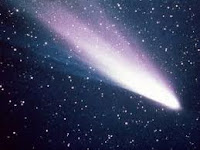1. A Natural Satellite is an object that moves around t planet.
2. For example, the Moon is Earth's only natural satellite. It moves
around the Earth.
3. All planets have their own natural satellites except for mercury
and venus.
4. Jupiter has the most natural satellites of any planet.
5. Each natural satellite is much smaller than its planet.
ASTEROIDS
1. An asteroid is a rocky object that moves around the Sun.
2. Asteroids have different shapes and sizes.
3. Their size can be up to several 100km across but they are usually
smaller than planets.
4. Most asteroids lie in a belt between the planets Mars and Jupiter.
5. This area is known as asteroids belt.
METEOROIDS
1. A meteoroid is a piece of stone or metal that floats and travels in
outer space.
2. There are millions of meteoroids in the Solar System. Most of
them are small.
3. Sometimes, a meteoroid may enter the Earth's atmosphere. When
this happens, the meteoroid will begin to heat up and start to
glow. This is called a meteor.
4. A meteor looks like a bright streak of light across the night sky. 5. It is also called a 'shooting star'.
6. most meteors burn up before they strike the surface of Earth.
7. A meteor that strikes the Earth surface is called a meteorite.
8. A meteorite can make a hole or a crater in the ground when it
hits it.
9.The Larger the meteorite, the bigger the crater.
Example of a crater and crater lake:
COMETS
1. A comet is lump of ice, frozen gases and dusts, which moves
around the Sun.
2. A comet does not give off light. But when it gets close enough to
the Sun, it will glow and form a long tail.
3. Its tail can sometimes be millions of kilometres along.
4. An example of a comet is Halley's Comet.
5. Halleys's Comet can be seen from Earth every 76 years.
Pictures of Halley's Comet:





No comments:
Post a Comment